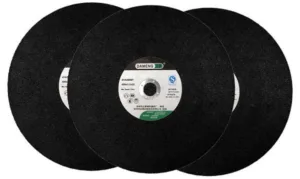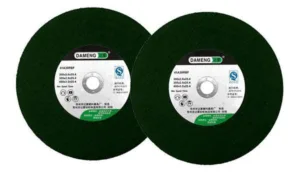Aluminum, known for its versatility and lightweight properties, is a popular material in various industries such as construction, aerospace, and automotive. When it comes to cutting aluminum, using the right tools is essential to ensure precision and efficiency. In this blog post, we’ll explore the world of cutting discs for aluminum, providing valuable insights on choosing the right discs and best practices for optimal results.
Understanding the Basics:
Before delving into cutting discs, it’s crucial to understand the properties of aluminum. Aluminum is a soft metal compared to steel, and its unique characteristics require specialized cutting tools. Abrasive cutting discs, commonly made of materials like aluminum oxide or silicon carbide, are designed to effectively cut through aluminum without causing excessive heat or damaging the material.
Choosing the Right Cutting Discs:
1. Material Composition:
Aluminum cutting discs are typically made of materials like aluminum oxide or silicon carbide. Aluminum oxide is suitable for general-purpose cutting, while silicon carbide is ideal for softer aluminum alloys.
2. Disc Type:
- Thin cutting discs are preferred for aluminum, as they generate less heat during cutting, reducing the risk of material distortion.
- Consider reinforced cutting discs for added durability and stability during the cutting process.
3. Size and Thickness:
Select the appropriate disc size and thickness based on the specific aluminum cutting task. Thinner discs are suitable for precision cuts, while thicker discs provide added durability for heavier applications.
Best Practices for Cutting Aluminum:
1. Use the Right Speed:
Adjust the cutting speed of your tool to match the recommended speed for aluminum cutting discs. This helps prevent overheating and ensures a smoother cutting process.
2. Cooling and Lubrication:
Apply a cutting fluid or lubricant to the aluminum surface during cutting to dissipate heat and prolong the life of the cutting disc.
3. Proper Technique:
Maintain a steady and controlled cutting motion to avoid putting excessive pressure on the disc. Let the disc do the work, and don’t force it through the material.
4. Safety First:
Always wear appropriate personal protective equipment, including safety glasses and gloves, when working with cutting discs. Follow safety guidelines provided by the disc manufacturer.
Conclusion:
Selecting the right cutting discs for aluminum is a crucial step in achieving precise and efficient results. By understanding the properties of aluminum, choosing the appropriate disc, and following best practices, you can ensure a successful cutting process while maintaining safety standards. Whether you’re working on a DIY project or in an industrial setting, the right cutting disks will contribute to a smooth and accurate aluminum cutting experience.



